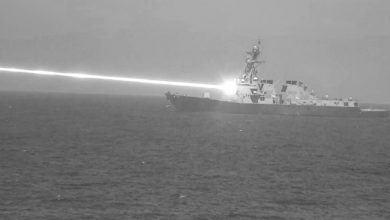Astronomers spot stars in the most distant galaxies for the first time

Since it launched on December 25th, 2021, the James Webb Space Telescope (JWST) has taken the sharpest and most detailed images of the universe, surpassing even its predecessor, the venerable Hubble Space Telescope.
But what is especially exciting are the kinds of observations we can look forward to, where the JWST will use its advanced capabilities to address some of the most pressing cosmological mysteries. For instance, there’s the problem presented by high-redshift supermassive black holes (SMBHs) or brightly-shining quasars that existed during the first billion years of the Universe.
To date, astronomers have not been able to determine how SMBHs could have formed so soon after the Big Bang. Part of the problem has been that, until recently, stars in host galaxies with redshift values of Z>2 (within 10.324 billion light-years) have been elusive. But thanks to the JWST, an international team of astronomers recently observed stars in quasars at Z>6 (within 12.716 billion light-years) for the first time. Their observations could finally allow astronomers to assess the processes in early quasars that governed the formation and evolution of the first SMBHs.
The team consisted of astronomers from multiple institutes, universities, and observatories in Japan, China, Europe, the U.K., the U.S., Brazil, Taiwan, and Israel. Notable institutions include the Kavli Institutes, the Max-Planck-Institutes, the Institut d’Astrophysique de Paris (IAP), and observatories like the National Astronomical Observatory of Japan (NAOJ), the W. M. Keck Observatory, the Steward Observatory, the Leiden Observatory, and others. Their study, “First detections of stellar light from quasar host galaxies at z>6,” is being reviewed for publication in the journal Nature, and a version of the paper is available on the arXiv preprint server.
Before the JWST, observations of high-redshift galaxies were limited by data quality and could not provide the necessary high-quality point spread function (PSF). This describes the ability of an optical system to obtain high-resolution and focused images of a distant point source of light. To shed some light on the new observations, Universe Today spoke with project lead and lead author Xuheng Ding (Kavli PMU) and co-authors Masafusa Onoue (Kavli PMU/Max Planck Institute for Astronomy) and John D. Silverman (Kavli PMU/University of Tokyo). As they related via email:
“Basically, to reveal the host galaxy of a quasar, the quasar+host image decomposition needs to be performed. The quasar is a point source which is unresolved and can be described by a scaled PSF. Usually, this information of PSF is from the isolated stars in the field of view.
“Besides, the JWST has higher resolution data and can observe the redder wavelength compared with the HST to allow this study to the higher redshift sample. Another advantage of this program is that we proposed to observe the lower luminosity quasar, which makes the subtraction of quasar images easier.”
The quasars they selected for their research were J2255+0251 and J2236+0032, two relatively low-luminosity quasars at redshifts of 6.34 and 6.40. This corresponds to a distance of about 13.43657 and 13.5637 billion light-years (when the light we see left these objects), or 24.876 and 25.11 billion light-years today. These quasars were first identified as part of a survey known as the Subaru High-z Exploration of Low-luminosity Quasars (SHELLQs). This survey used the Subaru Telescope’s HSC instrument to observe 162 low-luminosity quasars that existed one billion years after the Big Bang.
These quasars are now the subject of follow-up observations by the JWST program to study high-redshift galaxies and observe the stars in their disks for the first time. For their study, the team examined data obtained by the JWST Near-Infrared Camera (NIRCam), followed by modeling and subtracting the glare of the quasars themselves. They then compared their observations with studies of simulated quasar hosts at high redshift. The team noted some interesting features about these quasars and their SMBHs that set them apart from other early galaxies.
“The results show that the host galaxies of these two quasars are massive and compact,” said Ding and his colleagues. “The central positions are offset to the quasars, possibly due to uneven dust attenuation or may indicate that these SMBH are not at the center of the gravitational potential well yet.”
This is similar to recent observations of z>6 quasar host galaxies that relied on the Atacama Large Millimeter-submillimeter Array (ALMA). These observations also noted offsets in early quasars between the central SMBHs and the surrounding interstellar gas, dust, and stars. The team also notes that these offsets may be due to asymmetries generated by tidal forces, possibly due to galaxy interactions or the clumpy accretion of cold gas. The team will test these hypotheses in further papers based on data from JWST’s Near InfraRed Spectrograph (NIRSpec) of 12 early quasars. As Ding and his colleagues said,
“The importance of this first paper highlights the tremendous power of JWST and proof that the detection of the quasar host at z>6 is possible. Eventually, our program will establish the first z~6 quasar measurements of the host stellar mass and SMBH mass relation, which will be used to understand their co-evolution of the galaxy and its central SMBH. These works will also be useful in understanding the origin of SMBH in the early universe.”





